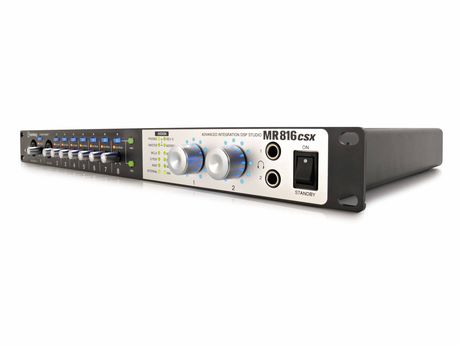Steinberg MR816 CSX Mini Review
AudioPaal's Steinberg MR816 CSX Mini Review
Overview
It's a 24-bit/96kHz-capable unit with a total of 16 ins and outs (eight analogue and eight digital in each direction).
There's eight class-A mic preamps, and the first two channels also include instrument inputs and unbalanced pre-conversion insert points. Coaxial and optical digital connections are included, and the eight digital channels can be allocated as ADAT, S/PDIF, or split (six ADAT, two S/PDIF).
Word clock in and out, twin FireWire (you can daisy chain up to three units) and two independent headphone outs on the front panel.
The front panel offers a gain knob, an LED level indicator, and 26dB pad and phantom power switches for each mic pre.
For the non-Cubase user, the MR is operated much like any other audio interface.
You can load the MR's Channel Strip and REV-X as plug-ins within your DAW, providing it supports VST3. The options being: eight mono instances; four stereo; six mono plus one REV-X; or three stereo channels plus one REV-X.
Since Steinberg's own Cubase and Nuendo are currently the only DAWs to cater for VST3, you won't be able to use the effects in other programs until/unless they add VST3 support.
The MR816 CSX works very well, and no other native system achieves this level of integration. The operation is easy, and the soundquality is awesome! If I ever need another soundcard, I'll buy one just like it and daisy-chain :)
Pros:
- Excellent Cubase integration
- Quality interface
- Pro-level EQ and Reverb
- Cubase AI included
- Easy to use
Cons:
- Expensive
- No Midi
If you're a Cubase user and needs a great soundcard, I can recommend this wholeheartedly! ![]()






